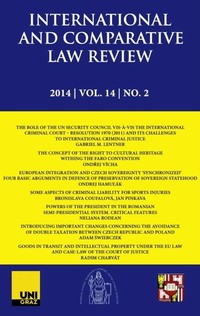The Kelsenian Model of Constitutional Review in Times of European Integration – Reconsidering the Basic Features
The Kelsenian Model of Constitutional Review in Times of European Integration – Reconsidering the Basic Features
Author(s): Aleksandra Kustra-RogatkaSubject(s): Constitutional Law, International Law, Human Rights and Humanitarian Law, EU-Legislation
Published by: Univerzita Palackého v Olomouci_1
Keywords: constitutional review; EU law; legal pluralism; heterarchy; constitutional courts; Court of Justice of the European Union; fundamental rights; constitutional supremacy; primacy of European Union law;
Summary/Abstract: The paper deals with the changes in the centralized (Kelsenian) model of constitutional review resulting from a state’s membership of the EU, which unequivocally demonstrates the decomposition of the classic paradigm of constitutional judiciary. The main point raised in the paper is that European integration has fundamentally influenced on the four above-mentioned basic elements of the Kelsenian model of constitutional review of legislation, which are the following: the assumption of the hierarchical construction of a legal system; the assumption of the supreme legal force of the constitution as the primary normative act of a given system; a centralised model of reviewing hierarchical conformity of legal norms; coherence of the system guaranteed by a constitutional court’s power to declare defectiveness of a norm and the latter’s derogation. All its fundamental elements have evolved, i.e. the hierarchy of the legal system, the overriding power of the constitution, centralized control of constitutionality, and the erga omnes effect of the ruling on the hierarchical non-conformity of the norms. It should be noted that over the last decade the dynamics of these changes have definitely gained momentum. This has been influenced by several factors, including the “great accession” of 2004, the pursuit of formal constitutionalization of the EU through the Constitutional Treaty, the compromise solutions adopted in the Treaty of Lisbon, the entry into force of the Charter, and the prospect of EU accession to the ECHR. The CJEU has used these factors to deepen the tendencies towards decentralization of constitutional control, by atomising national judicial systems and relativizing the effects of constitutional court rulings within national legal systems. The end result is the observed phenomenon, if not of marginalisation, then at least of a systemic shift in the position of constitutional courts, which have lost their uniqueness and have become “only ones of many” national courts.
Journal: International and Comparative Law Review
- Issue Year: 19/2019
- Issue No: 1
- Page Range: 7-37
- Page Count: 31
- Language: English

